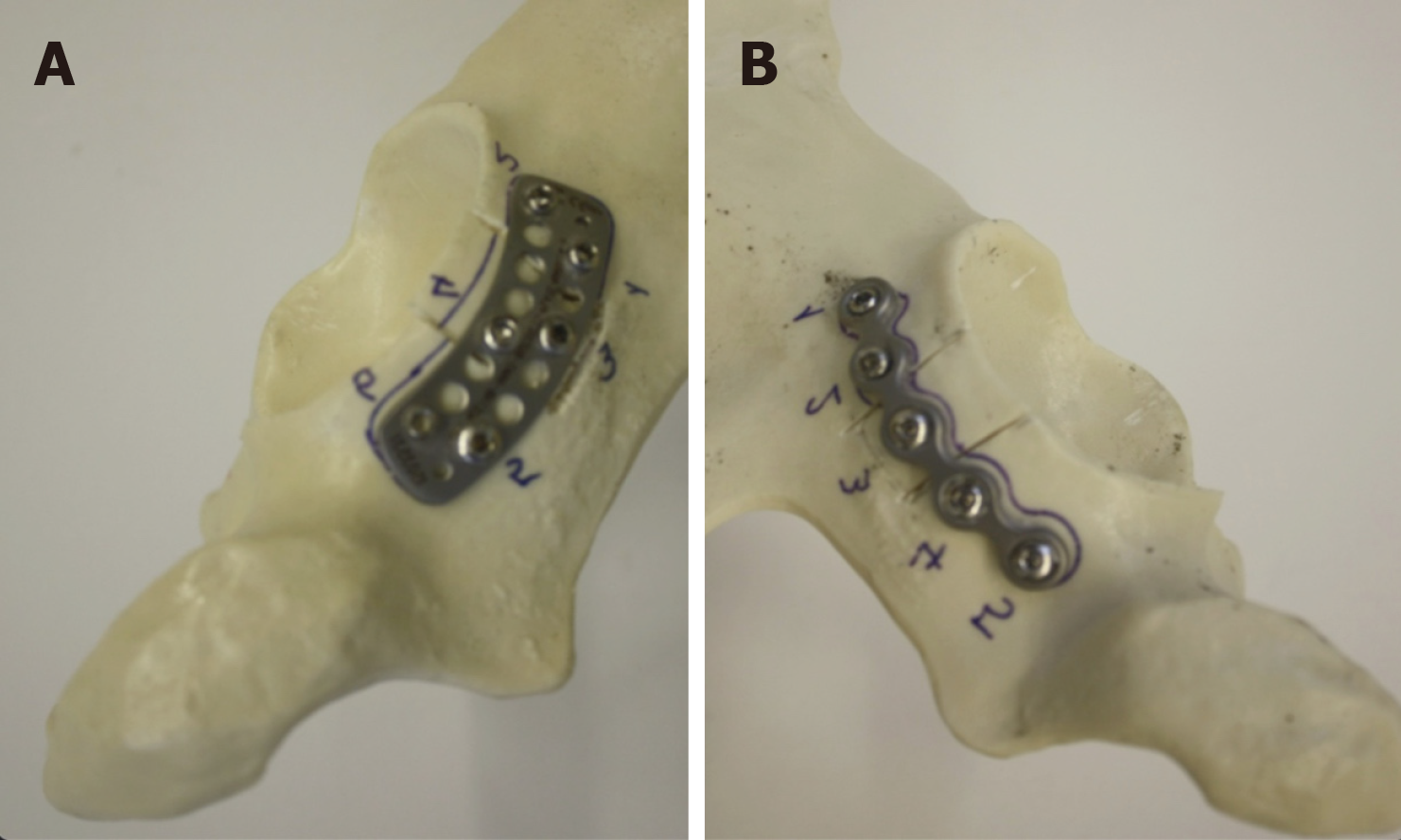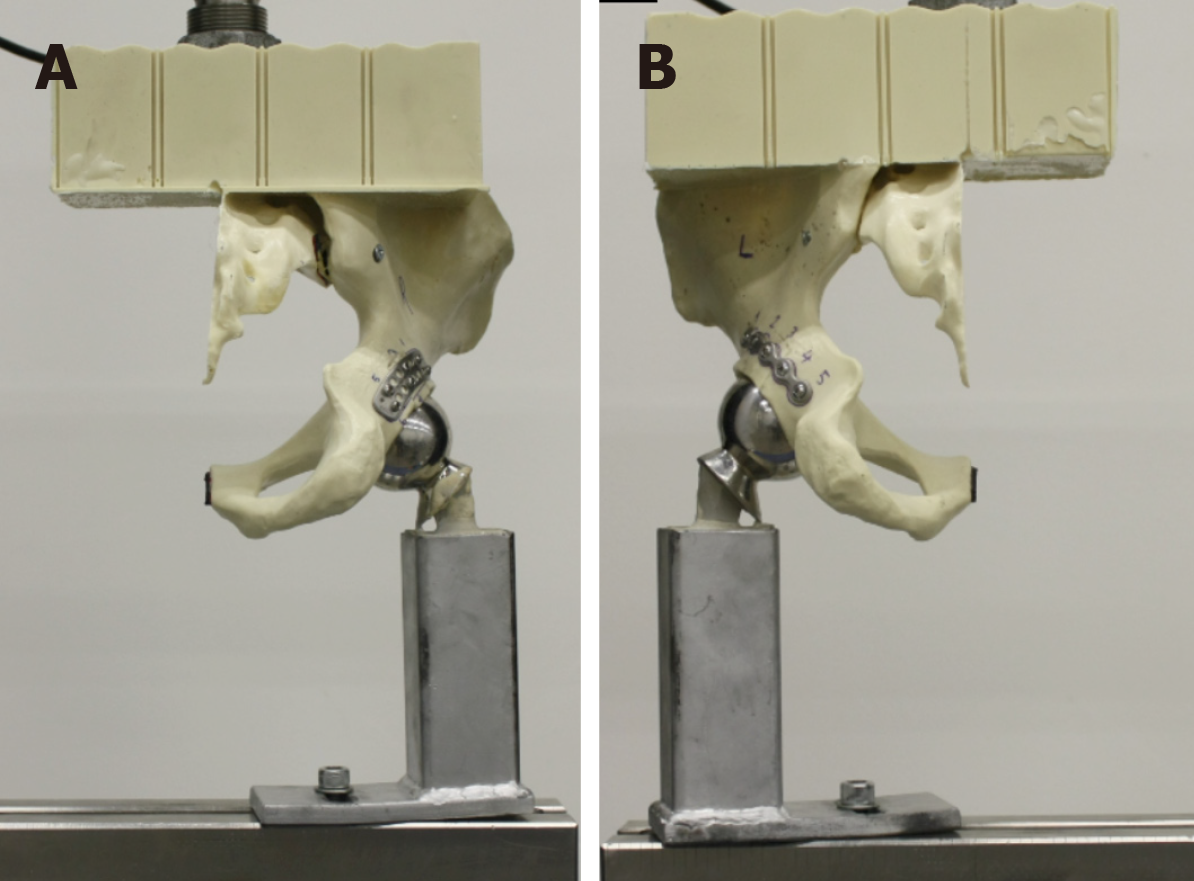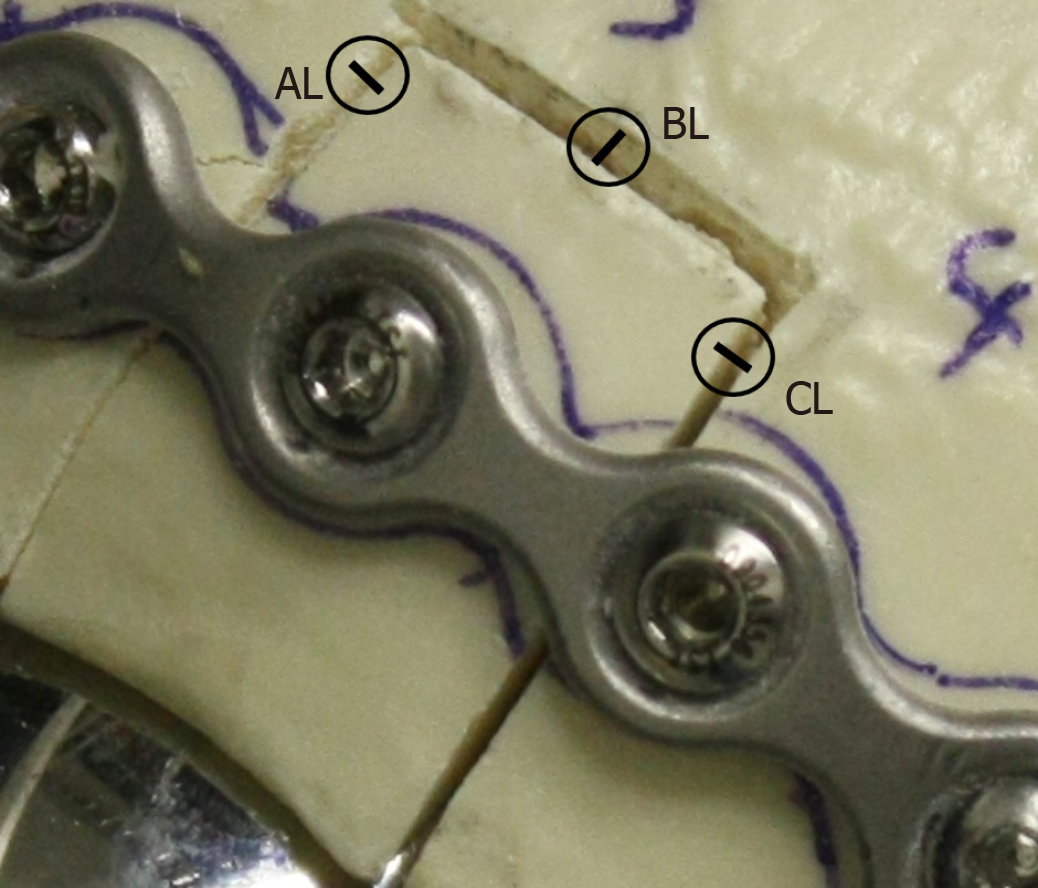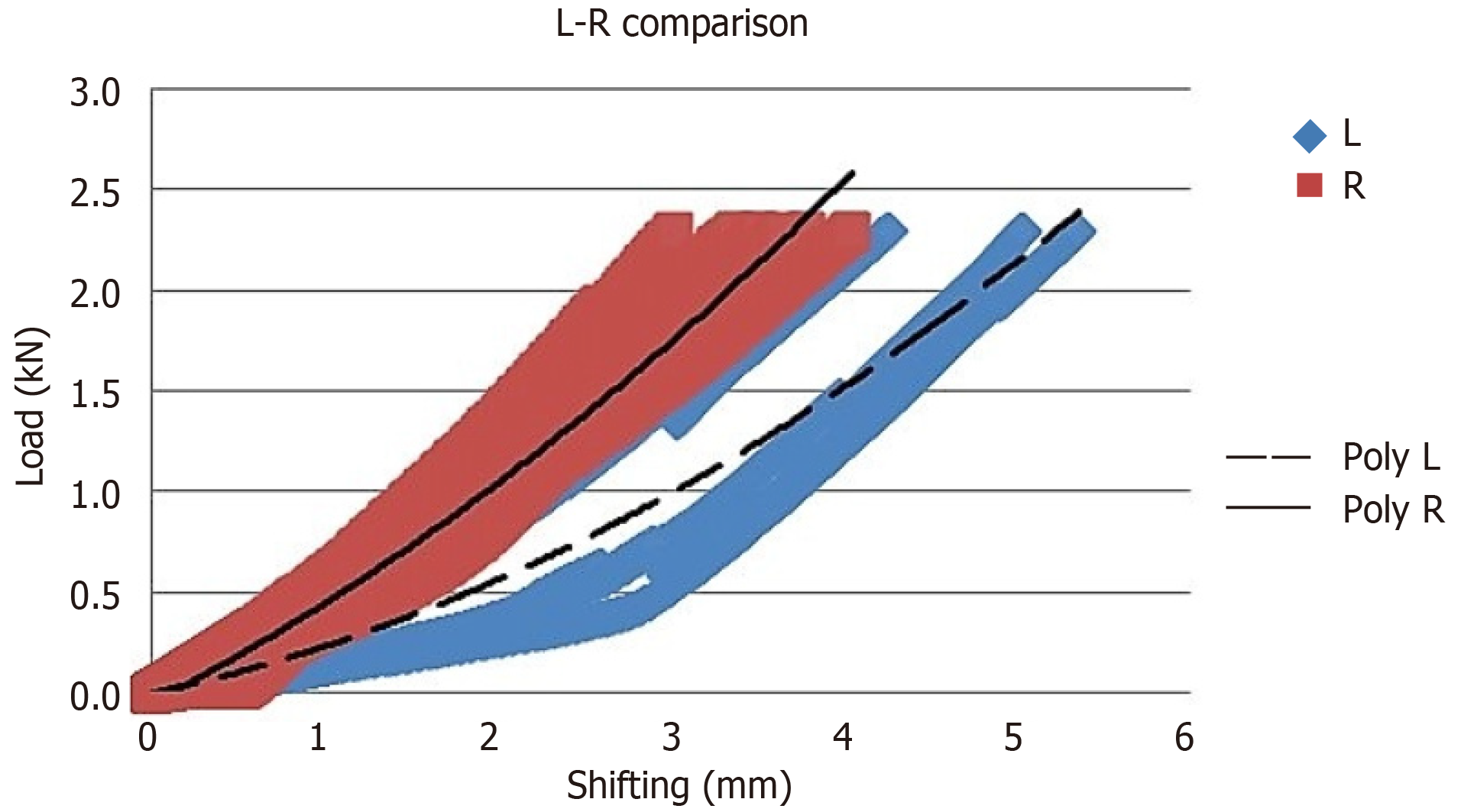Copyright
©The Author(s) 2019.
World J Orthop. May 18, 2019; 10(5): 219-227
Published online May 18, 2019. doi: 10.5312/wjo.v10.i5.219
Published online May 18, 2019. doi: 10.5312/wjo.v10.i5.219
Figure 1 The plates used to fix the fracture pattern in the experimental model system.
A: A 16-hole precontoured buttress plate with six bicortical screws; B: A 5-hole conventional curved reconstruction plate with five bicortical screws. The screws were fixed throughout the posterior acetabular wall.
Figure 2 Synthetic hemipelvis models mounted in a polyurethane block for proper positioning when axial load is applied through the polyurethane block.
A: A 16-hole precontoured anatomic buttress plate; B: A 5-hole conventional curved reconstruction plate.
Figure 3 Parameters measured during the test procedure.
AL: Posterosuperior fracture line vertical to the ground surface; BL: Posterior wall fracture line horizontal to the ground; CL: Posteroinferior fracture line vertical to the ground surface.
Figure 4 Comparison of distribution graphs for the conventional curved reconstruction plate and precontoured anatomical buttress plate.
The slope of the linear part of the graph represents stiffness. L: Left hemipelvis model fixated with precontoured anatomical buttress plate; R: Right hemipelvis model fixated with conventional curved reconstruction plate.
- Citation: Altun G, Saka G, Demir T, Elibol FKE, Polat MO. Precontoured buttress plate vs reconstruction plate for acetabulum posterior wall fractures: A biomechanical study. World J Orthop 2019; 10(5): 219-227
- URL: https://www.wjgnet.com/2218-5836/full/v10/i5/219.htm
- DOI: https://dx.doi.org/10.5312/wjo.v10.i5.219












